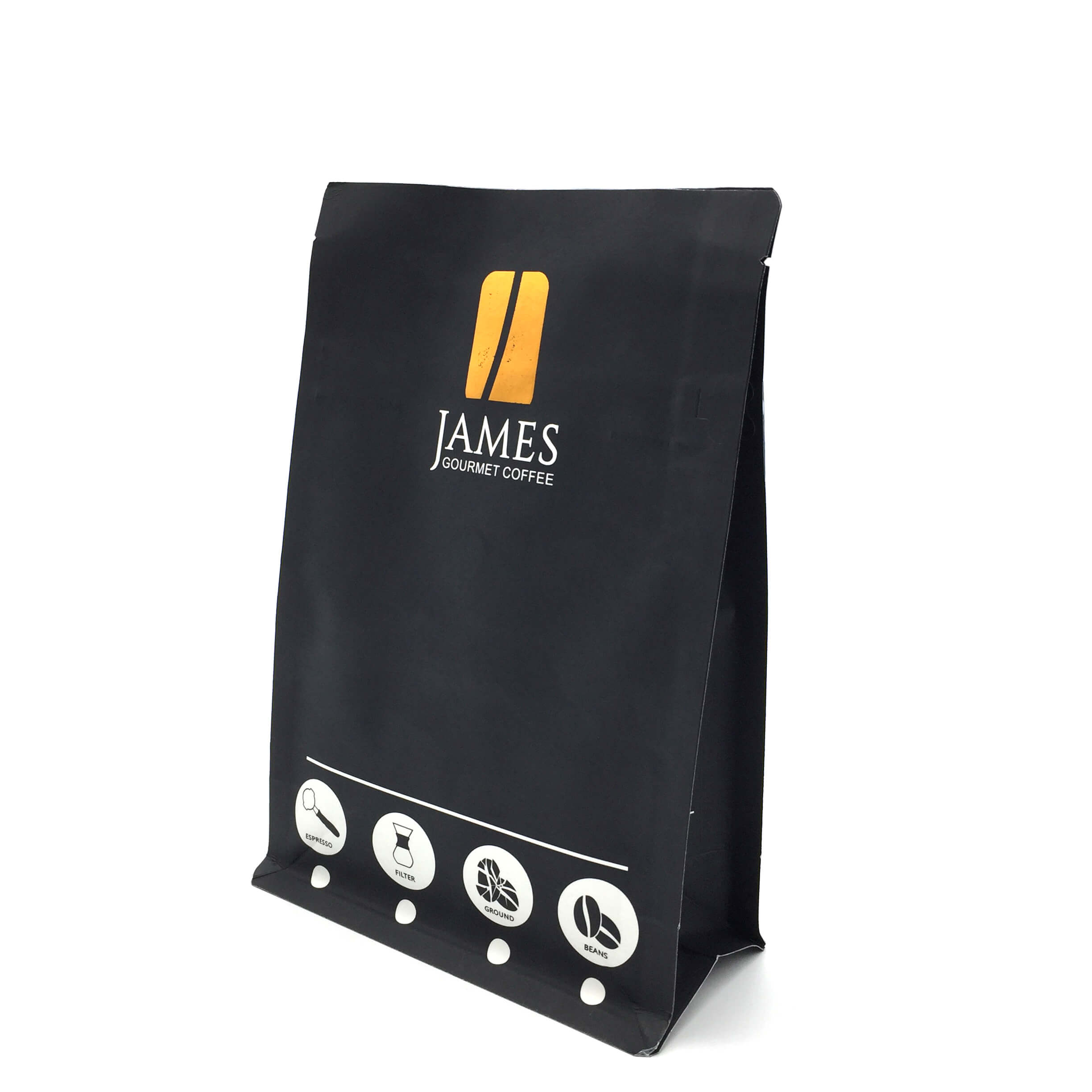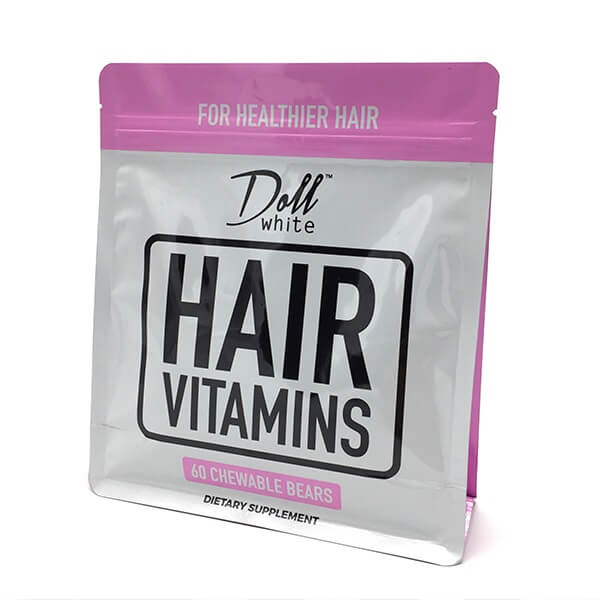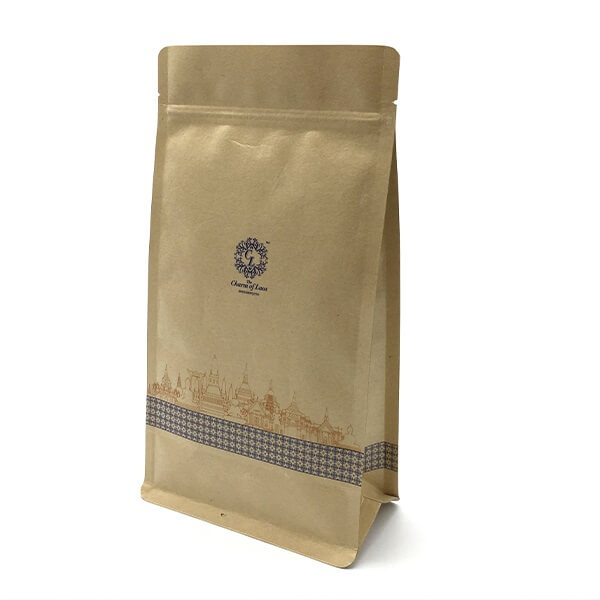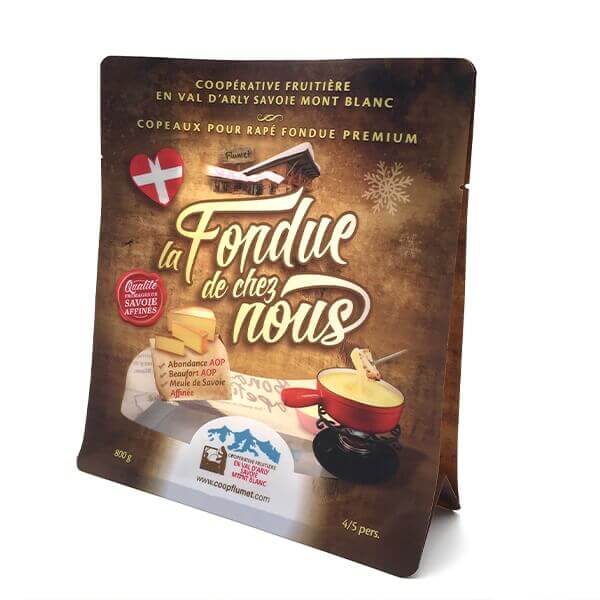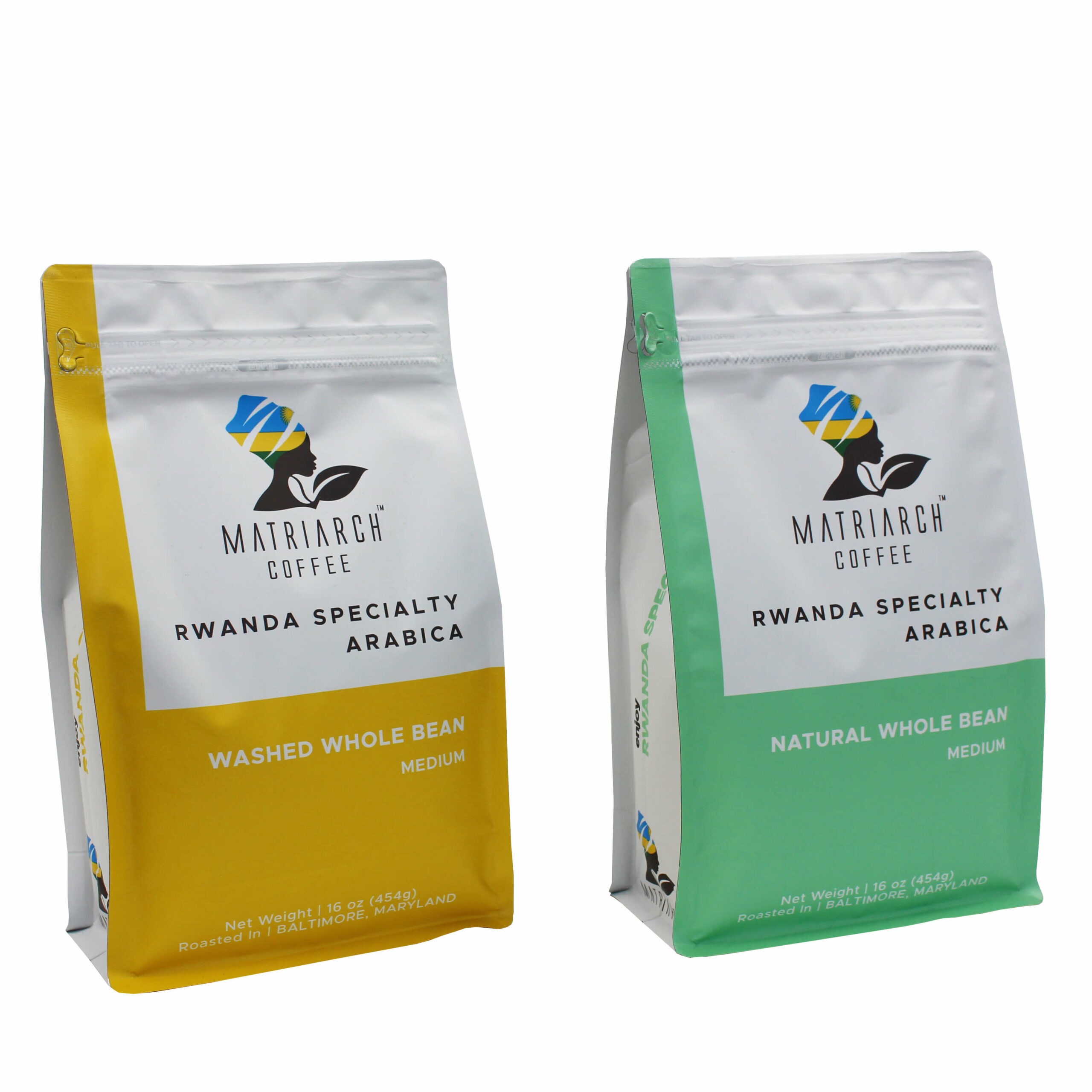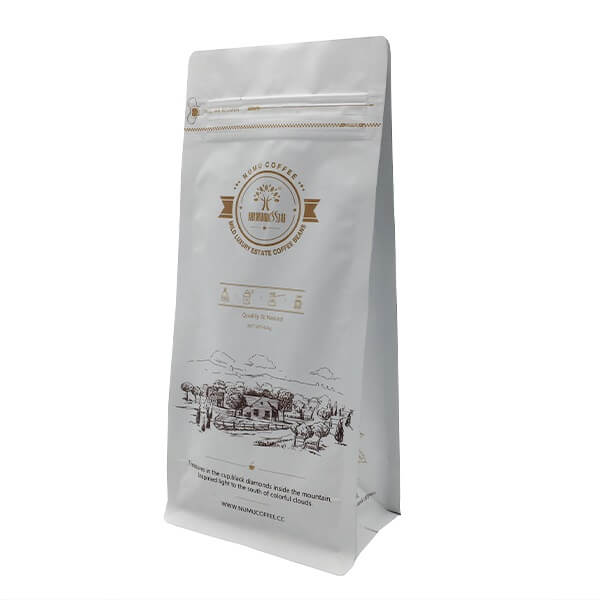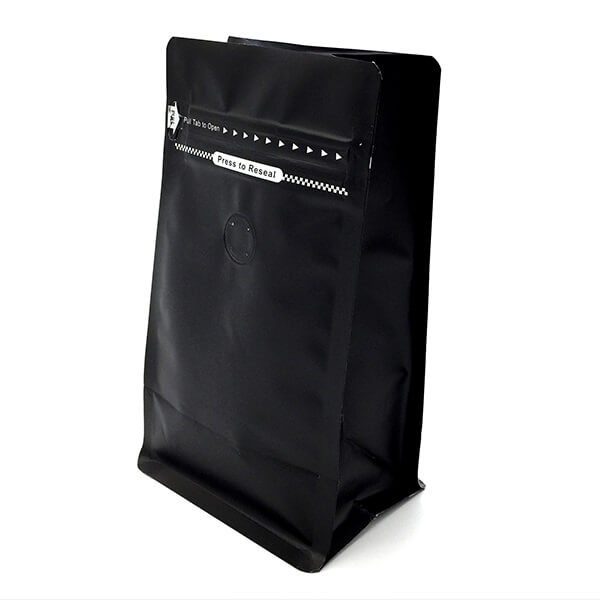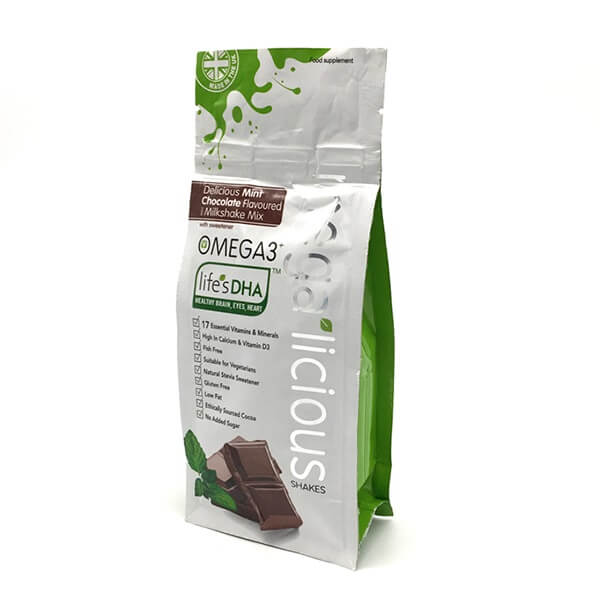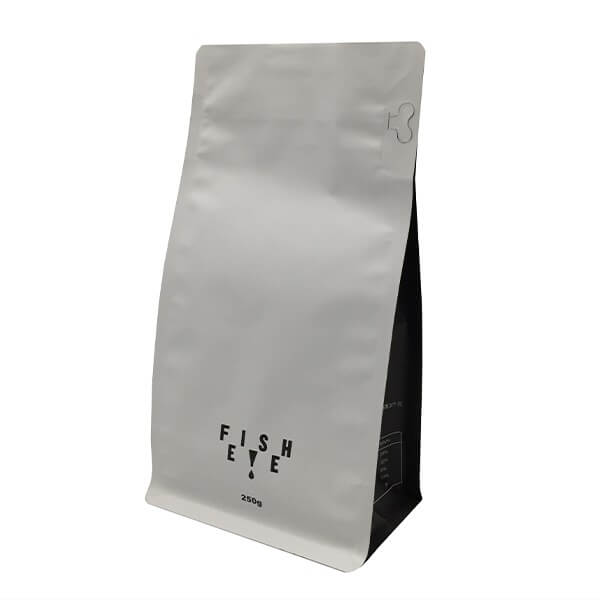Home » Bags & Pouches » Flat Bottom Pouches » Flat Bottom Food Bags
Flat Bottom Food Bags
Flat bottom food bags are pouches with the completely flat bottom, also called box pouches or quad seal pouches allow specialty food creators to proudly display their brands on store shelves.
Please note that we have a MOQ for our pouch. For pouches in stock, the MOQ is 500 pcs. For customized pouches, please see the MOQ as followed:
1, Digital Printing — 500 pcs
2, Gravure Printing — 5,000pcs
Rinpac assists you throughout your project: bag shape, material, thickness, capacity and printing options. Please contact us or mark your requirements on the inquiry quotation.
Order single or thousands of items at a time. Our warehouse and flexible shipping options are available for last-minute, deadline critical orders.
- Free Sample
*Customization is always available, please mark down your need in cart or just contact us.
Specification of Flat Bottom Food Bags
| Materials | Per customer’s packaging needs. Using materials such as clear poly, metalized films, foil laminations and kraft paper. All pouches are made of food grade solvent free packaging materials. |
| Sizes | Per customers’ needs. |
| Styles | Quad sealed flat bottom |
| Resealable Features | Press-to-close zippers: Economical and commonly used |
| Tin Ties: Available in Plastic and Kraft | |
| Additional Features | Tear notches |
| Degassing Valves | |
| Knocked out windows providing a sneak peek of what’s inside: clear window, frosted window, or matte finish with glossy clear window | |
| Laser scoring or laser perforation | |
| Printing | Glossy printing |
| Matte finish printing | |
| Glossy printing with spot matte finishes | |
| Per customer’s design and requirements. | |
| Accessories | Zipper for reclosure |
| Tin Tie for reclosure | |
| Degassing Valve |
Video of Flat Bottom Food Bags
Request A Quote - Flat Bottom Food Bags
Need something helped in a short time? We’ve got a plan for you.
Introduction to Flat Bottom Food Bags
Flat bottom food bags are innovative packaging solutions designed to provide stability, convenience, and freshness for a variety of food products. With their unique flat bottom design, these bags offer enhanced shelf presence and ease of storage, making them ideal for both retail and consumer use. Whether used for snacks, baked goods, grains, or confectionery items, flat bottom food bags are versatile options that cater to the diverse needs of the food industry. In this introduction, we’ll explore the features, benefits, and applications of flat bottom food bags, highlighting their importance in modern food packaging solutions.
Advantages of Using Flat Bottom Food Bags
Flat bottom food bags offer numerous advantages that make them a preferred choice for packaging various food products. Here are some key benefits:
Enhanced Stability: The flat bottom design of these bags provides superior stability and prevents tipping or spilling, ensuring that the contents remain intact during storage and transportation. This feature is particularly beneficial for fragile or delicate food items, such as baked goods or snacks, as it helps maintain their shape and presentation.
Increased Brand Visibility: Flat bottom food bags offer ample space for branding, labeling, and product information, allowing brands to showcase their logos, graphics, and messaging prominently. This increased brand visibility helps attract consumers’ attention on retail shelves and reinforces brand recognition, ultimately driving sales and customer loyalty.
Eco-Friendly Packaging Option: Many flat bottom food bags are made from eco-friendly materials, such as recyclable plastics, biodegradable films, or compostable paper. Choosing these sustainable packaging options not only reduces environmental impact but also aligns with consumers’ growing preference for eco-conscious products. By opting for eco-friendly flat bottom food bags, brands can demonstrate their commitment to sustainability and appeal to environmentally conscious consumers.
Different Types of Flat Bottom Food Bags
Flat bottom food bags come in various types, each offering unique features and benefits to cater to different packaging needs. Here are some common types of flat bottom food bags:
Kraft Paper Flat Bottom Bags:
Kraft paper flat bottom bags are made from sturdy and environmentally friendly kraft paper material. These bags have a natural and rustic appearance, making them ideal for packaging organic or artisanal food products. They are often used for items like coffee beans, nuts, grains, and baked goods.
Clear Flat Bottom Bags:
Clear flat bottom bags are transparent or translucent, allowing the contents to be easily visible to consumers. These bags are perfect for showcasing the freshness and quality of food products, such as candies, cookies, dried fruits, and snacks. The clear design enhances product visibility and attracts attention on retail shelves.
Matte and Glossy Finish Flat Bottom Bags:
Flat bottom bags are available in both matte and glossy finishes, offering different aesthetic options for packaging. Matte finish bags have a subtle and elegant appearance, while glossy finish bags have a shiny and vibrant look. Both finishes provide a professional and polished presentation, enhancing the overall appeal of the packaged food products.
Each type of flat bottom food bag has its own advantages and applications, allowing brands to choose the most suitable option based on their product requirements and branding preferences.
Applications of Flat Bottom Food Bags
Flat bottom food bags are versatile packaging solutions suitable for a wide range of food products. Here are some common applications of these bags:
Bakery Products:
Flat bottom food bags are ideal for packaging various bakery products such as bread, pastries, cookies, muffins, and cakes. The stable flat bottom design ensures that baked goods remain upright and well-presented, maintaining their shape and freshness during storage and display.
Coffee and Tea Packaging:
Coffee beans and loose-leaf teas require packaging that preserves their freshness and aroma while also providing a visually appealing presentation. Flat bottom food bags are excellent choices for coffee and tea packaging, as they offer stability, moisture resistance, and ample space for branding and labeling. These bags help protect the quality of the coffee and tea while enhancing their shelf presence.
Snacks and Confectionery:
Flat bottom food bags are commonly used for packaging a variety of snacks and confectionery items, including chips, nuts, popcorn, candies, chocolates, and dried fruits. The sturdy construction and secure sealing of these bags ensure that snacks and confectionery remain fresh, crunchy, and flavorful, making them irresistible to consumers. Additionally, the transparent or translucent options allow the products to be showcased attractively, enticing customers with their visual appeal.
Design Features of Flat Bottom Food Bags
Flat bottom food bags are designed with various features to enhance functionality, convenience, and visual appeal. Here are some common design features found in these bags:
Gusseted Sides:
Flat bottom food bags often feature gusseted sides, which allow the bags to expand and accommodate a larger volume of products. The gussets create a spacious interior, providing ample room for bulkier items or allowing the bags to stand upright more easily on retail shelves. This design feature maximizes storage capacity and improves the overall stability of the bags.
Zipper Closure:
Many flat bottom food bags come equipped with a zipper closure mechanism, allowing for easy opening and resealing. The zipper closure ensures that the contents remain fresh and secure between uses, extending the shelf life of perishable food items such as snacks, nuts, and dried fruits. This convenient feature also enhances the user experience by providing hassle-free access to the contents.
Window Panels:
Flat bottom food bags may incorporate window panels made of transparent or translucent materials, such as clear plastic or film. These window panels allow consumers to see the contents of the bags without opening them, providing a sneak peek of the product inside. Window panels are particularly useful for showcasing visually appealing food items like cookies, candies, and baked goods, enticing customers with their vibrant colors and textures.
Choosing the Right Flat Bottom Food Bag for Your Product
Selecting the appropriate flat bottom food bag is crucial to ensure optimal packaging performance and presentation. Here are key factors to consider:
Consideration of Product Type and Weight:
Assess the type of food product you intend to package and its weight. Different products may have varying requirements in terms of durability, barrier properties, and capacity. For example, lightweight snacks like chips may require thinner, more flexible materials, while heavier items like coffee beans may necessitate sturdier materials with higher puncture resistance. Ensure that the chosen bag can adequately support and protect the product throughout its lifecycle.
Customization Options:
Explore customization options to tailor the flat bottom food bag to your brand identity and product specifications. Look for suppliers that offer options such as custom printing, color choices, branding elements, and sizing flexibility. Customized packaging not only enhances brand recognition but also allows you to communicate important product information, such as ingredients, nutritional facts, and branding messages, effectively to consumers.
Environmental Impact of Flat Bottom Food Bags
In recent years, there has been a growing emphasis on reducing the environmental impact of packaging, including flat bottom food bags. Here are two key aspects to consider:
Biodegradable Materials:
Many manufacturers are shifting towards using biodegradable materials in the production of flat bottom food bags. These materials are designed to break down naturally over time, reducing the amount of waste that ends up in landfills and minimizing environmental harm. Common biodegradable materials used in flat bottom food bags include compostable plastics, bio-based films, and paper-based materials sourced from sustainable forestry practices.
Recycling Options:
Recycling is another important aspect of mitigating the environmental impact of flat bottom food bags. Some flat bottom food bags are made from recyclable materials, such as polyethylene terephthalate (PET) or high-density polyethylene (HDPE), which can be collected, processed, and remanufactured into new products. Additionally, certain municipalities and recycling facilities may accept these materials for recycling, further reducing their environmental footprint.
By choosing flat bottom food bags made from biodegradable materials and ensuring proper recycling options are available, businesses can minimize their environmental impact and contribute to a more sustainable packaging ecosystem.
Tips for Effective Branding with Flat Bottom Food Bags
Branding plays a crucial role in attracting customers’ attention and fostering brand loyalty. Here are some tips for effectively branding your flat bottom food bags:
Logo Placement:
Strategically place your logo on the flat bottom food bags to ensure maximum visibility. Consider placing the logo prominently on the front or center of the bag where it is easily noticeable. Additionally, explore opportunities to incorporate your logo into the overall design of the bag, ensuring it complements the packaging aesthetics while still standing out.
Color and Design Choices:
Choose colors and designs that align with your brand identity and resonate with your target audience. Consider using your brand’s signature colors to create consistency across your packaging and reinforce brand recognition. Select designs that evoke the desired brand image and appeal to the emotions and preferences of your customers. Experiment with patterns, textures, and graphic elements to create visually appealing and memorable packaging.
Informational Panels:
Utilize informational panels on the flat bottom food bags to communicate important product details, brand messages, and marketing promotions. Include key information such as product features, benefits, ingredients, usage instructions, and nutritional facts. Incorporate engaging copywriting and imagery to capture consumers’ interest and encourage them to learn more about your brand and products.
By strategically incorporating logo placement, color and design choices, and informational panels into your flat bottom food bags, you can effectively enhance your brand’s visibility, communicate your brand message, and create a memorable packaging experience for your customers.
Cost Considerations of Flat Bottom Food Bags
When evaluating the cost of flat bottom food bags, it’s essential to consider both short-term expenses and long-term savings. Here are two key factors to keep in mind:
Bulk Purchase Benefits:
Purchasing flat bottom food bags in bulk quantities often comes with cost-saving benefits. Suppliers may offer discounts or volume-based pricing for larger orders, allowing businesses to reduce their per-unit costs. By buying in bulk, businesses can take advantage of economies of scale and lower their overall packaging expenses, especially for products with high turnover rates or consistent demand.
Long-term Savings:
While the initial upfront cost of flat bottom food bags may seem higher compared to other packaging options, it’s essential to consider the long-term savings they offer. Flat bottom food bags made from durable materials and equipped with features like zipper closures or window panels can help extend the shelf life of food products, reducing the likelihood of spoilage or product damage. Additionally, investing in high-quality, sturdy bags can minimize the need for frequent replacements, ultimately lowering packaging costs over time.
By leveraging bulk purchase benefits and considering the long-term savings associated with durable and high-quality flat bottom food bags, businesses can effectively manage their packaging expenses while ensuring product quality and freshness.
How to Store and Handle Flat Bottom Food Bags
Proper storage and handling of flat bottom food bags are essential to maintain product quality and integrity. Here are some guidelines to follow:
Proper Storage Conditions:
Store flat bottom food bags in a clean, dry, and well-ventilated environment away from direct sunlight, heat sources, and moisture. Excessive heat or humidity can compromise the integrity of the bags and affect the quality of the packaged food products. Ensure that the storage area is free from pests and other contaminants that could potentially damage the bags or contaminate the contents.
Handling Instructions:
Handle flat bottom food bags with care to prevent punctures, tears, or damage to the packaging. Avoid dragging or dropping the bags, especially if they contain heavy or fragile items. When filling the bags, do not overfill them beyond their capacity, as this can strain the seams and cause the bags to burst. Use appropriate lifting techniques when moving or transporting filled bags to minimize the risk of accidents or spills.
By storing flat bottom food bags in suitable conditions and handling them properly, businesses can ensure that the packaging remains intact and the contents are preserved effectively until they reach the end consumer.
Future Trends in Flat Bottom Food Bags
As the packaging industry continues to evolve, several emerging trends are shaping the future of flat bottom food bags. Here are two key trends to watch for:
Sustainable Materials:
With increasing consumer awareness of environmental issues, there is a growing demand for sustainable packaging solutions, including flat bottom food bags. Manufacturers are exploring innovative materials and production processes that prioritize sustainability and minimize environmental impact. Expect to see more flat bottom food bags made from biodegradable, compostable, or recycled materials, as well as advancements in eco-friendly packaging technologies.
Smart Packaging Solutions:
The integration of smart technologies into packaging, known as smart packaging, is another trend driving innovation in the flat bottom food bag industry. Smart packaging solutions leverage sensors, RFID tags, and other embedded technologies to provide real-time data on product freshness, shelf life, and handling conditions. These intelligent packaging solutions enhance traceability, improve inventory management, and ensure product safety and quality throughout the supply chain. Look for flat bottom food bags equipped with smart features that offer value-added benefits to both businesses and consumers.
By embracing sustainable materials and smart packaging solutions, flat bottom food bags are poised to meet the evolving needs of the industry and contribute to a more environmentally friendly and technologically advanced packaging landscape.
Conclusion
In conclusion, flat bottom food bags offer a versatile and effective packaging solution for a wide range of food products. With their stability, branding opportunities, and environmental considerations, these bags play a crucial role in preserving product quality, enhancing brand visibility, and meeting consumer demands. As businesses continue to prioritize sustainability and innovation, flat bottom food bags are expected to evolve with future trends, including the use of sustainable materials and smart packaging solutions. By staying ahead of these trends and adapting to changing consumer preferences, businesses can leverage flat bottom food bags to differentiate their products, reduce their environmental footprint, and drive long-term success in the competitive market landscape.

